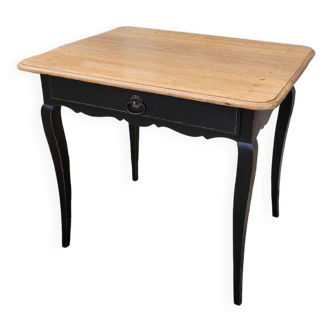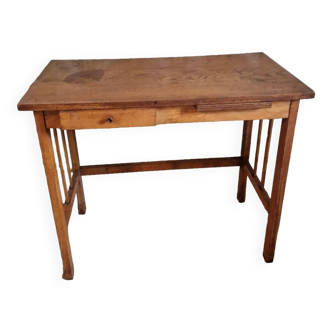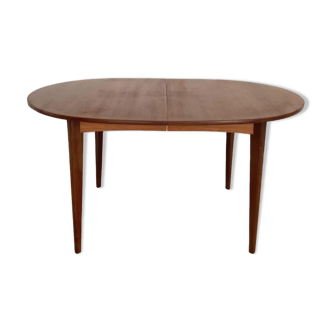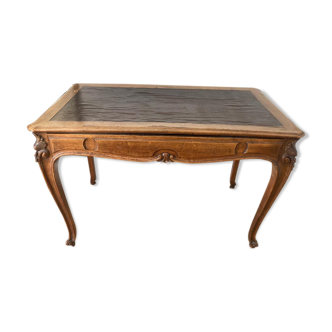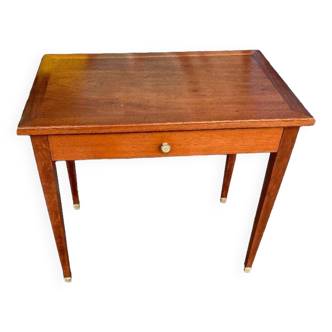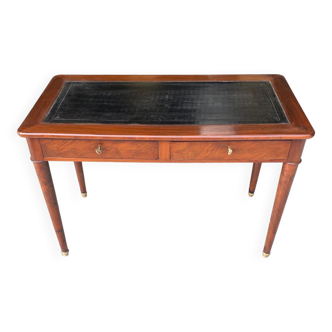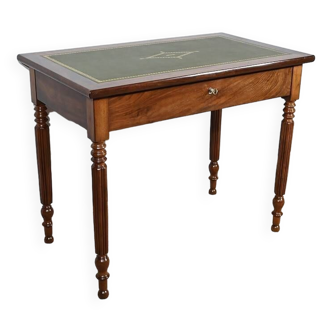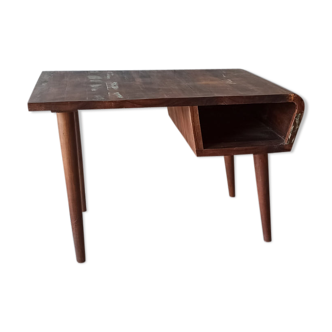Süe & Mare desk in amboyna burl and rosewood 1921

- Dimensions :
- H73 x W110 x D75
- Color :
- multicolour
- Material :
- rosewood
- Style :
- art deco
This walnut, rosewood and amboyna burl veneer flat desk dates from the early 1920s, and was made by louis süe and andré mare. It takes us straight into the great art deco period. Its elegant curves, its top highlighted with a twisted wooden reed, its tapered sheathed legs with cut sides ending in small volutes, and its three gilded handles contrasting perfectly with the amboyna burl, make it a work of rare finesse, and characteristic of the work of louis süe and andré mare. This desk was created for one of the stores of the famous linzeler family, who for a century worked in the world of jewelry, jewelry and goldsmithing. It has been completely restored, varnished with a shellac stamp, according to the traditional technique, and is in superb condition. Stamped by the compagnie des arts français. Literature: florence camard, süe & mare and the compagnie des arts français, les éditions de l'amateur, paris, 1993, similar model referenced under n°238 reproduced on page 279. The two french designers met at the julian louis süe academy. While everyone opposed them by their training, their tastes and their ideas, the painter andré mare (1885-1932) and the architect louis süe (1875 -1968) multiplied their creations and collaborations. Breaking with art nouveau, the ideal desired by the two men was to perfectly combine aesthetics and functionality. After having founded the ateliers français in 1912, they decided to go further in their quest for innovation, elegance and refinement, and founded the compagnie des arts français in 1919, a true revolution at the time in the world of furniture and decoration. Many painters, including dunoyer de segonzac and véra, joined this institution which made its mark at the international exhibition of decorative arts in 1925. André mare and louis süe designed the pavilion of the museum of contemporary art.






























